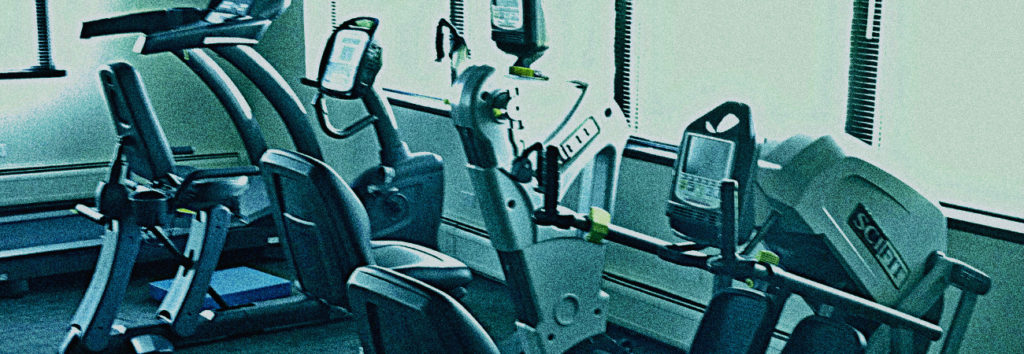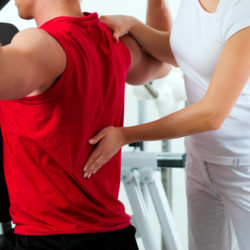
 APC’S Multidisciplinary Personal Pain Management Plan combines and integrates Conventional Medicines’ Interventional Practices ( • Injections • Prescriptives • Procedures • Physical Therapies • Psychotherapies • ) with select Complementary Medical Practices ( • Aqua Therapy • Aromatherapy • Nutritional Therapy • ) to achieve the highest patient quality of life possible.
APC’S Multidisciplinary Personal Pain Management Plan combines and integrates Conventional Medicines’ Interventional Practices ( • Injections • Prescriptives • Procedures • Physical Therapies • Psychotherapies • ) with select Complementary Medical Practices ( • Aqua Therapy • Aromatherapy • Nutritional Therapy • ) to achieve the highest patient quality of life possible.
Physical Therapy for Pain Management
Physical Therapy is the treatment or management of pain or physical movement / malfunction through the use of exercise, massage, electronic stimulation, ultrasound, and other therapies. It may be prescribed for acute or chronic pain, post-operative rehabilitation, and other reasons.
- One of the best choices you can make when you have long-term (chronic) pain
- Makes you stronger and helps you move and feel better.
- Improves Your Mobility & Motion
- Avoid, Minimize and/or Supplement – Prescription Drugs
- Avoid, Minimize and/or Supplement – Surgery
- Participate In Your Own Recovery
APC can help guide you with referrals for physical therapy.
Physical Therapies for Pain
- Electrical Stimulation Therapy
- Guided Exercise Therapies
- Massage Therapy
- Ultrasound Therapy
Therapeutic Equipment
- Physio-exercise Ball
- Resistance Bands
- Seated Stepper Upper Body Exerciser
- Stationary Bicycle
- Treadmill
- Weights

Psychotherapy for Pain Management
- Multiple studies indicate the average pain reduction achieved with opioid medications is just 32 percent, and opioid medications have numerous side effects.
- However, there is ample evidence that opioids and other pain medications are more effective if depression, anxiety and other mental health symptoms are addressed.
- Chronic pain is a complex condition requiring a multi-modal approach, including various psychological interventions, to improve overall function and quality of life.
APC can help guide you with referrals for psychotherapy.
Pain Management Psychotherapies
- Cognitive-Behavioral Therapy
- Acceptance and Commitment Therapy
- Relaxation Training
- Pain Coping Skills Training
- Muscle Relaxation
- Self-hypnosis Training
Two Examples of Patients Who May Benefit from Pain Management Psychotherapies
- Patients who start crying in the first minute or two or show overt symptoms of depression or anxiety.
- Patients who answer the question “What are your goals?” with a response along the line of “I want to get my life back.”.
Complementary and Alternative Medicine (CAM) is a diverse group of medical and health care systems, practices, and products that are not presently considered to be part of Conventional Medicine.
• Conventional Medicine is medicine as practiced by holders of Medical Doctor (M.D.) degrees and by related health professionals, such as Physical Therapists (PT), Psychologists, and Registered Nurses (RN).
• Complementary Medicine is used together with Conventional Medicine; an example being Aromatherapy used to help lessen a patient’s discomfort following surgery. Other examples include Art Therapy, Music Therapy, Nutritional Therapy, and Inversion Therapy.
• Alternative Medicine is used in place of Conventional Medicine; an example being a vegetable juice diet to treat cancer instead of undergoing cancer surgery, radiation or chemotherapy.
• Integrative Medicine combines treatments from Conventional Medicine and CAM for which there is high-quality evidence of safety and effectiveness.
Aqua Therapy
Link: Oak Brook Park District
Family Aquatic Center
1450 Forest Gate Road
630-645-9581
• Adult • $10 Resident • $12 Non-Resident
• ADA Accessible Facility
• Lap Pools • 10-Person Whirlpool
Link: Adult Aquatic Fitness – Oak Brook
Link: Pool Schedule – Oak Brook

Open Swim Hours
• 06:00pm-9:30pm Mon-Thu
• 04:00pm-9:30pm Fri
• 12:00pm-5:30pm Sat & Sun
Lap Swim Hours
• 5:30am-9:30pm Mon-Fri
• 7:00am-5:30pm Sat & Sun
Aromatherapy
Brochure: Essential Oils for Pain Management
Essential Oils’ Pain Fighting Potential
1. Chronic Pain
• Chronic pain can be a debilitating and frustrating condition that can cause emotional or mental distress, thus impacting our ability to heal. There are several essential oils that may provide relief from the discomfort of chronic pain and the accompanying anxiety and stress.
• Basil: Energizing and uplifting, with potential anti-inflammatory, and decongestant benefits
• Peppermint: Cools and may calm the mind with potential anti-inflammatory, and pain relieving benefits
• Wintergreen: May increases attentiveness with additional pain relieving benefits
• Clove: May assist healing with arthritis benefits
• Lavender: May relax and balance the body with anti-inflammatory benefits
• Sandalwood: May encourage relaxation

2. Joint & Bone Pain
• While joint and bone pain typically require conventional medical attention, certain essential oils that may assist in managing this type of pain.
• Helichrysum: Potential anti-inflammatory and nerve regenerating benefits
• Idaho Balsam Fir: May ease sore muscles, joints, tendons and back pain
• Spruce: May soothe arthritis, back pain, and sciatica
3. Muscle Pain
• Most muscle aches and pain go away within a few days but when they linger for a longer time, essential oils may provide relief as part of a comprehensive Personal Pain Management Plan.
• Roman Chamomile: May help relieve stress and anxiety and offers anti-inflammatory, relaxant and detoxifying benefits
• Marjoram: May help with aches, pains and muscular cramps
• Rosemary: May help keep the mind alert and help with muscle soreness
• Thyme: May help with fatigue and rheumatism
Music Therapy
Link: American Music Therapy Association
 • Therapists often use music therapy as a means of conditioning the patient to relax and release pain and stress in order to help manage their chronic pain.
• Therapists often use music therapy as a means of conditioning the patient to relax and release pain and stress in order to help manage their chronic pain.
• Soothing music is paired with relaxation techniques, and eventually the patient learns to relax automatically when listening to the music.
Art Therapy
Link: Art Therapy (Wikipedia)
Link: ArtTherapy.org
 • Chronic pain is a physical condition with psychological and social aspects which can benefit from immersion in arts and crafts.
• Chronic pain is a physical condition with psychological and social aspects which can benefit from immersion in arts and crafts.
• Art therapy is based on the theory that creativity and healing come from the same place in the mind.
• Patients who paint, embroider, make crafts or jewelry often become so involved in their art that the outside world, and their pain, temporarily fade away.
Nutritional Therapy
• Brochure: Vitamin D for Pain
• Link: Vitamin D Supplements for Patients With Chronic Pain
Source: NCBI.NLM.NIH.gov
• Link: Anti-Inflammatory Diet for Patients With Chronic Pain
Low-grade chronic inflammation is now known to be a driver of most chronic degenerative diseases, including in seemingly distinct chronic disease such as atherosclerosis and osteoarthritis.
The ketogenic Mediterranean diet includes olive oil, green vegetables, salads, fish (as the primary protein), lean meat, fowl, eggs, shellfish, cheese has been shown to reduce Low-grade Chronic Inflammation.
Source: PracticalPainManagement.com
• Link: High-Protein Diet for Patients With Chronic Pain
Patients with chronic pain need a high-protein–intake diet with avoidance of carbohydrate (sugars and starches)-induced episodes of hypoglycemia and weight gain; in addition to promoting strength, movement, mental function, and energy
Source: PracticalPainManagement.com
Inversion Therapy
 • Inversion therapy is one example of the many ways in which stretching the spine (spinal traction) has been used in an attempt to relieve back pain.
• Inversion therapy is one example of the many ways in which stretching the spine (spinal traction) has been used in an attempt to relieve back pain.
• Some people find traction temporarily helpful as part of a more comprehensive treatment program for lower back pain caused by spinal disk compression.
CAUTION: Inversion for more than a couple of minutes often causes your heartbeat to slow and your blood pressure to increase, and your eyeballs’ internal pressure can increase dramatically. You should not try inversion therapy if you have high blood pressure, heart disease or glaucoma for these reasons.
